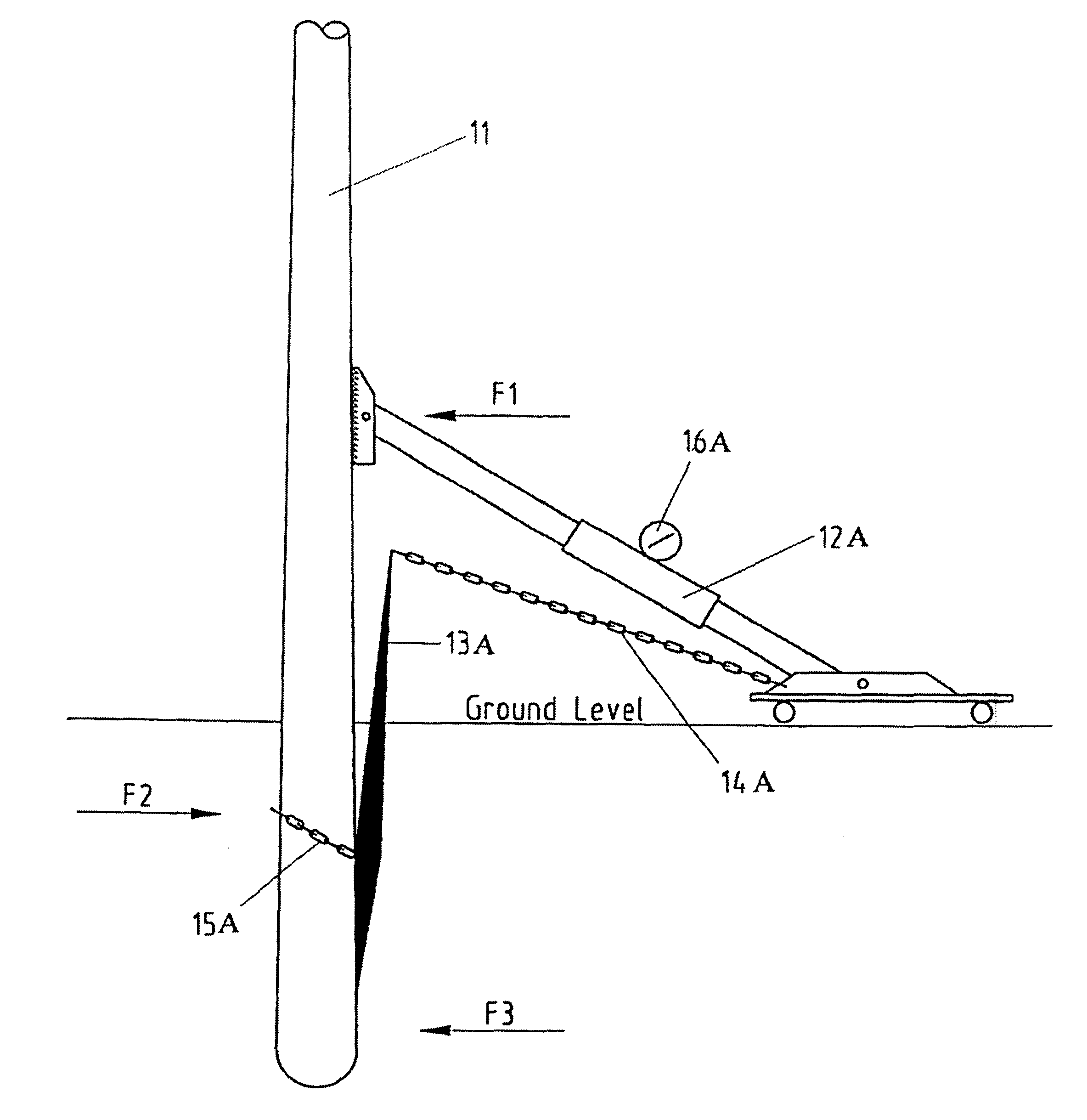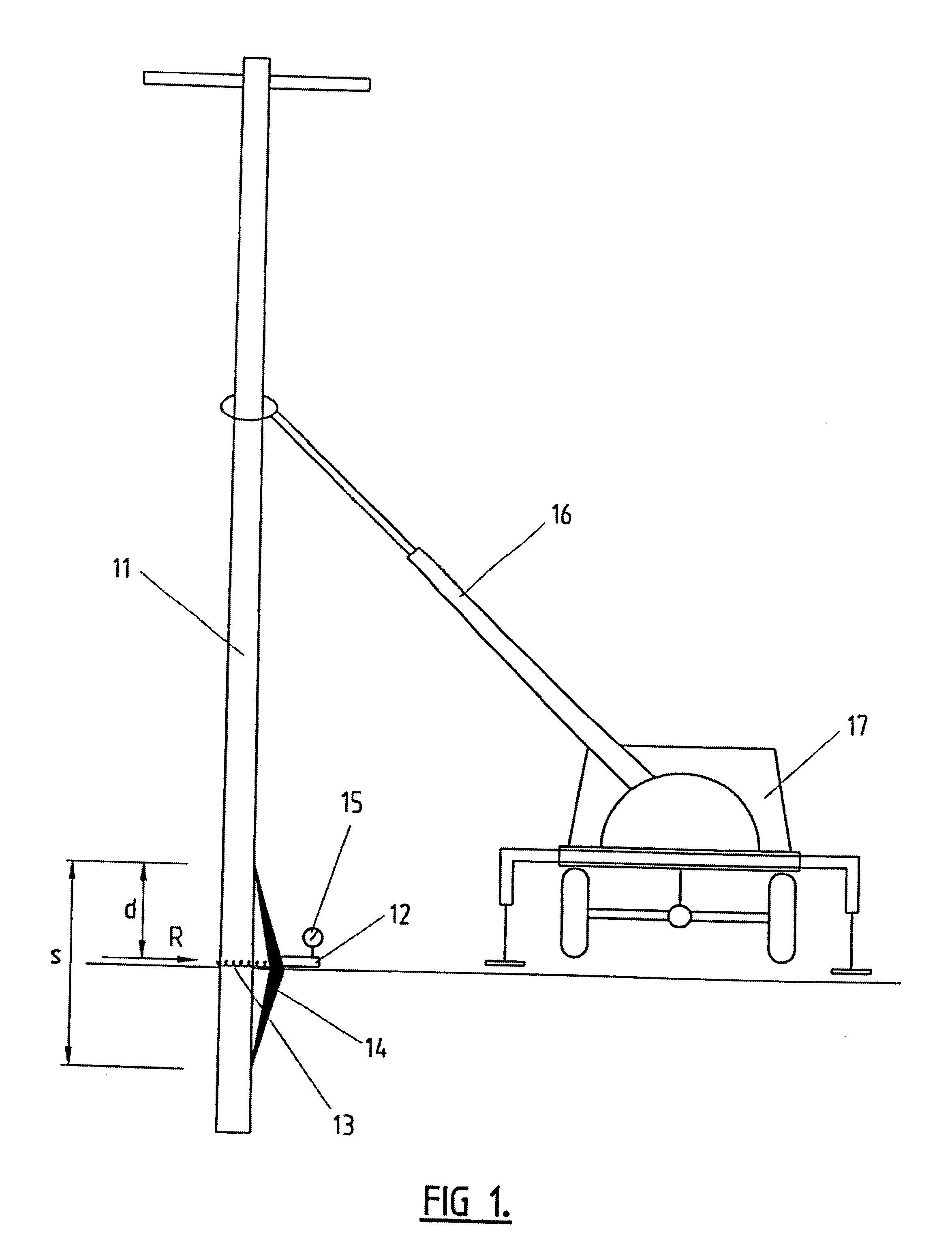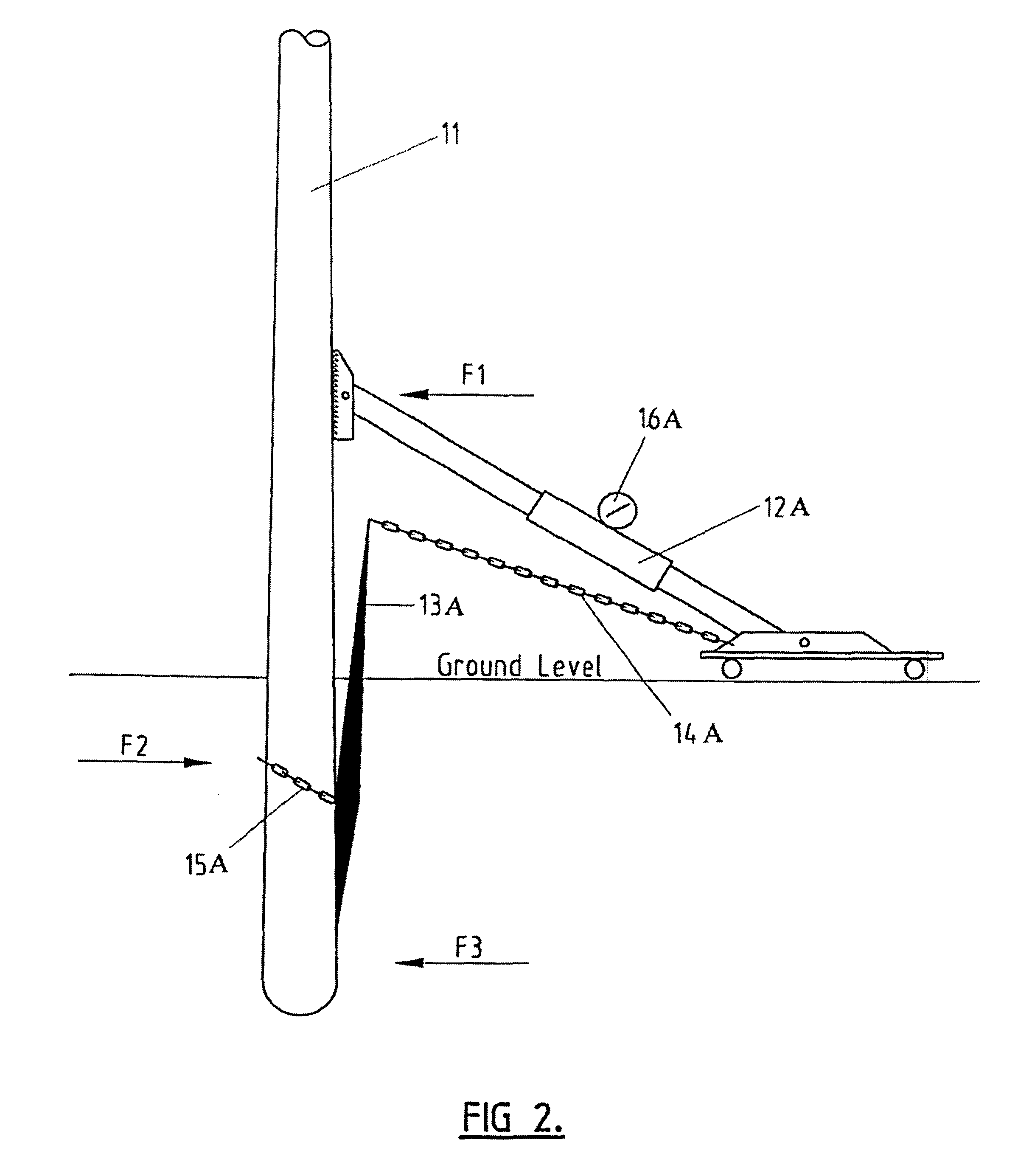Method, apparatus and support for testing poles
a technology of apparatus and support, applied in the direction of lifting frames, lifting devices, and material strength using steady bending forces, can solve the problems of insufficient support ability of existing profiles, high manufacturing cost of supports, and large weight of cables, and achieve the effect of sharp edges
- Summary
- Abstract
- Description
- Claims
- Application Information
AI Technical Summary
Benefits of technology
Problems solved by technology
Method used
Image
Examples
Embodiment Construction
Referring to FIG. 1, a pole 11 is pulled with a hydraulic ram 12 through a chain 13 and simultaneously pushed with the ends of a beam 14 until a preset load R is obtained on a load cell 15.
The beam 14 can be operated by a crane boom 16 mounted on a truck 17.
Having the values of the predetermined required strength of pole M, the span s of the beam 14 and the distance d between the hydraulic ram 12 and one of the ends of the beam, the load R to be obtained on the load cell can be easily calculated from the following formula: ##EQU1##
Stability of the pole in case of its failure is provided by a safety boom 16 of a truck 17, or by a pole support illustrated in FIGS. 7 to 15.
Referring to FIG. 2, a pole 11 is simultaneously:
pushed with a hydraulic ram 12 which by its extension pulls the top end of a vertical beam 13 through a chain 14, and
pulled with a chain which is attached to the lower part of the vertical beam 13, and
pushed with the bottom end of the vertical beam 13 below the ground ...
PUM
| Property | Measurement | Unit |
|---|---|---|
| length | aaaaa | aaaaa |
| distance | aaaaa | aaaaa |
| lengths | aaaaa | aaaaa |
Abstract
Description
Claims
Application Information
 Login to View More
Login to View More - R&D
- Intellectual Property
- Life Sciences
- Materials
- Tech Scout
- Unparalleled Data Quality
- Higher Quality Content
- 60% Fewer Hallucinations
Browse by: Latest US Patents, China's latest patents, Technical Efficacy Thesaurus, Application Domain, Technology Topic, Popular Technical Reports.
© 2025 PatSnap. All rights reserved.Legal|Privacy policy|Modern Slavery Act Transparency Statement|Sitemap|About US| Contact US: help@patsnap.com



